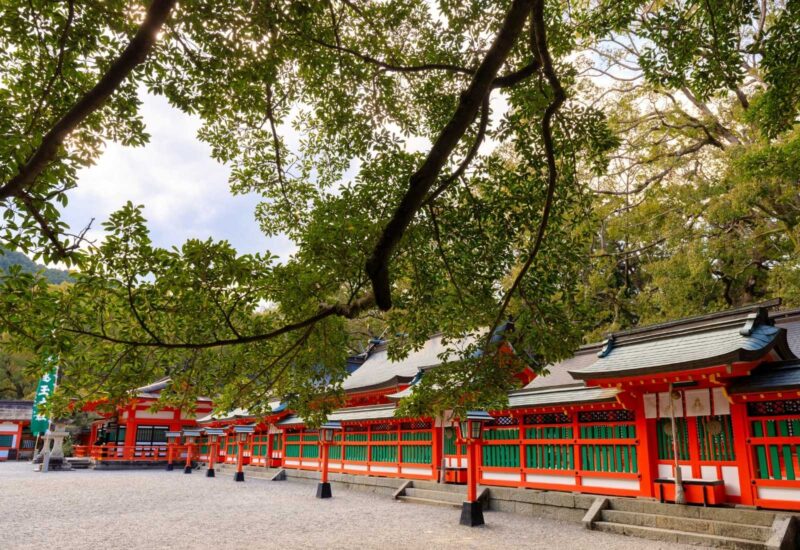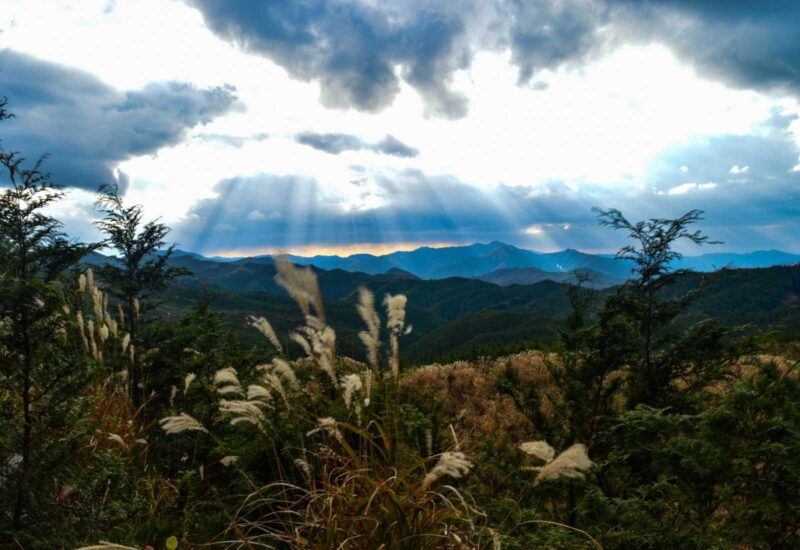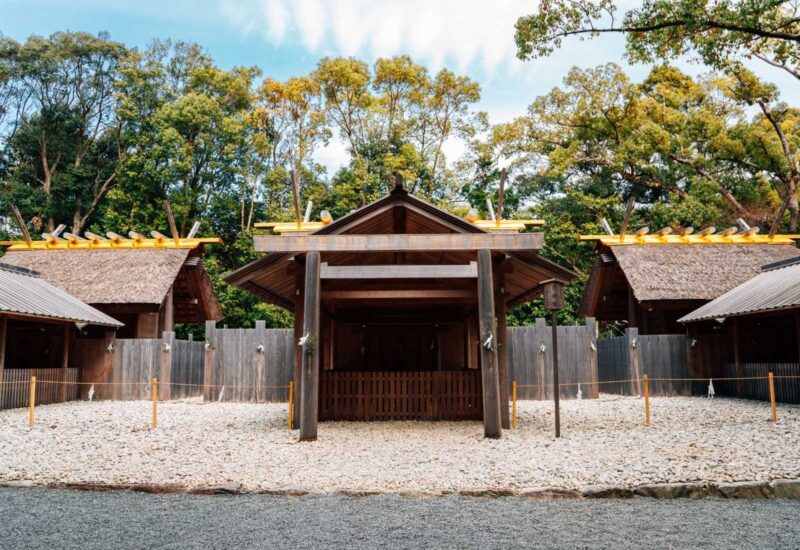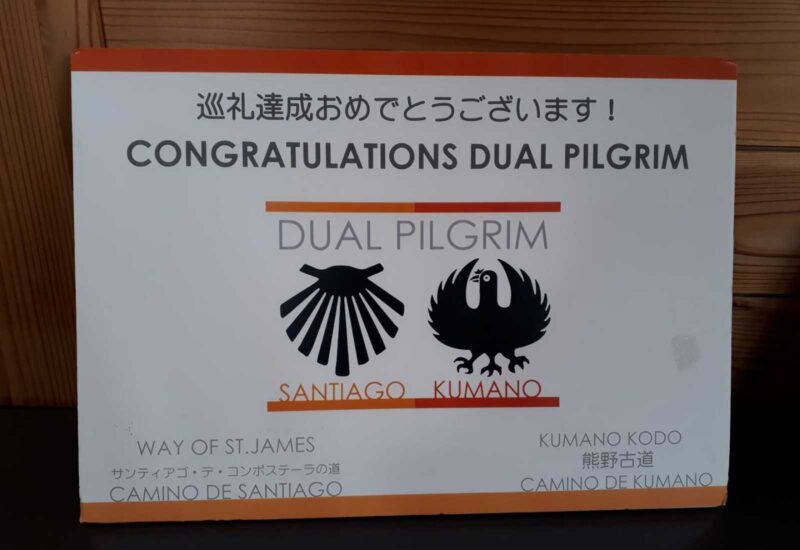There are countless pilgrimage routes around the world as meaningful as the Camino de Santiago. In Japan, one of the most famous is the Kumano Kodo, a historic network of trails that connects different points of the Kii Peninsula and the three great Kumano shrines (Kumano Hongu Taisha, Kumano Hayatama Taisha and Kumano Nachi Taisha; the Kumano Sanzan). This network, active for more than a thousand years, was declared a UNESCO World Heritage Site in 2004 as part of the property “Sacred Sites and Pilgrimage Routes in the Kii Mountain Range.”
Just like the Camino de Santiago, the Kumano Kodo has a twinning program called Dual Pilgrim, which recognizes those who complete both routes.
Imperial Route or Nakahechi
In ancient times, the Nakahechi route was the one most used by the imperial family and court (especially between the 10th and 12th centuries), which is why it is also known as the “Imperial Route.” The historic itinerary began in Kyoto and, after descending by boat along the Yodo-gawa River to Osaka, pilgrims continued towards Tanabe to enter the mountains on their way to the Kumano shrines.

Nakahechi Temple
Tanabe – Kumano Hongu Taisha – Kumano Hayatama Taisha – Kumano Nachi Taisha (today)
Today, the Nakahechi route is very well restored and clearly marked. The most popular section starts at Takijiri-oji and, depending on the variant, stretches for about 38–45 km to Kumano Hongu Taisha. (In the Dual Pilgrim program, the section from Takijiri-oji to Hongu of approximately 38 km is the minimum recognized distance.)
Traditionally, after reaching Hongu, pilgrims descended the Kumano-gawa River by boat to Kumano Hayatama Taisha (Shingu) and continued along the coast to Kumano Nachi Taisha.
Mountain Route or Koyasan / Kohechi
The Kohechi connects Koyasan (the great spiritual center of Shingon Buddhism) with Kumano Hongu Taisha, crossing the mountainous heart of the Kii Peninsula from north to south. It is probably the most demanding route due to its steep elevation gain, limited infrastructure in some sections, and several passes above 1,000 meters. Its actual length is around 65–70 km (not 700 km).

Mount Koyasan
Koyasan – Kumano Hongu Taisha (today)
Recommended only for hikers with experience. It requires planning and advance booking, as there is not much infrastructure or accommodation along the way.
Coastal Route or Ohechi
Between the 10th and 15th centuries, the Ohechi linked the coastal city of Tanabe with the Fudarakusan-ji Temple (near Nachi). In addition to its religious importance, during the Edo period it gained fame as a scenic route thanks to its wide views of the Pacific Ocean.
Tanabe – Fudarakusan-ji (today)
Today it has not disappeared, but much of the original path has been modernized or runs alongside roads; some marked sections remain that offer spectacular panoramic views. It is less popular than other routes, and practical information can be more limited.
Eastern Route or Iseji
The Iseji connects the Ise Grand Shrine with the Kumano Sanzan, combining mountain passes, bamboo forests, rice fields, and beaches. Among its most famous sections are the Magose Pass (Owase) and the Matsumoto Pass (Kumano city).

Ise Temple
Ise – Kumano Hongu Taisha Variant / Ise – Kumano Hayatama Taisha Variant
Many sections of the Iseji route remain very popular for their scenic beauty and good accessibility from train stations or local bus lines.
Dual Credential (Dual Pilgrim)
The Camino de Santiago and the Kumano Kodo, both recognized by UNESCO, are twin routes through the Dual Pilgrim program. Pilgrims can obtain a dual credential and, after completing both routes, register as dual pilgrims to receive a pin and certificate.
Completing one of these Kumano Kodo routes on foot:
- Takijiri-oji to Kumano Hongu Taisha (approximately 38 km).
- Kumano Nachi Taisha to Kumano Hongu Taisha (approximately 30 km).
- Hosshinmon-oji to Kumano Hongu Taisha (approximately 7 km) plus a visit to Kumano Hayatama Taisha and Kumano Nachi Taisha.
- Koyasan to Kumano Hongu Taisha (Kohechi route, approximately 65–70 km).
Completing the Camino de Santiago with these specifications:
- Having completed at least 100 km on foot or horseback, or at least 200 km by bicycle.
- Obtaining the pilgrim credential to collect stamps along both routes. The Camino de Santiago credential can be obtained in Spain (for example, at the Pilgrim’s Office in Santiago), and the Kumano Kodo credential in Japan (for example, in Tanabe or Hongu).
- You can also obtain the dual credential directly at several points in Japan, not only in Tanabe but also in Koyasan or Ise.
- Register as a dual pilgrim after completing both routes, at the designated offices, either in the city of Tanabe or in Santiago de Compostela.
On the official website you will find everything you need to obtain the credential and complete your registration.

Dual Pilgrim between the Camino de Santiago and the Kumano Kodo
Accommodation and logistics
In many towns, the accommodation options are limited and have restricted hours. The scarcity of available rooms and the high demand make prices relatively high. Although ideally the route is done stage by stage, a practical option is to set a base point and use public transport to cover each day’s journey. The best-connected towns for this are Shingu and Kii-Katsura.
Tips
- Visit the Kii-Tanabe Tourist Information Office before starting to collect free maps and ask questions. Note that in some sections there is no mobile coverage.
- Just like on the Camino de Santiago, make sure to wear suitable footwear.
- Adapt your clothing to the season: in summer there is heat, humidity, and mosquitoes (long sleeves and trousers recommended), and sudden temperature changes are possible.
- To avoid carrying your backpack, there is a luggage delivery service (luggage shuttle) on the official website.
- You can also hire specialized guides through the area’s official website.
- Gastronomy: try mehari-zushi (rice balls wrapped in pickled leaves), ayu from the Kumano River, Kumano wagyu beef, yudōfu (boiled tofu) or onsen-gayu (rice porridge cooked with hot spring water), and Otonashi tea from the Fushiogami district.
The Kumano Kodo and the Camino de Santiago share more than just history: both are paths of transformation, spirituality, and inner discovery. If you are drawn to walking an ancient route, in Spain you will find many different Camino itineraries, each with its own charm, landscapes, and rhythm. If you are still unsure which one to choose, we can help you plan your journey—your first step toward earning your Dual Compostela.












Leave A Comment